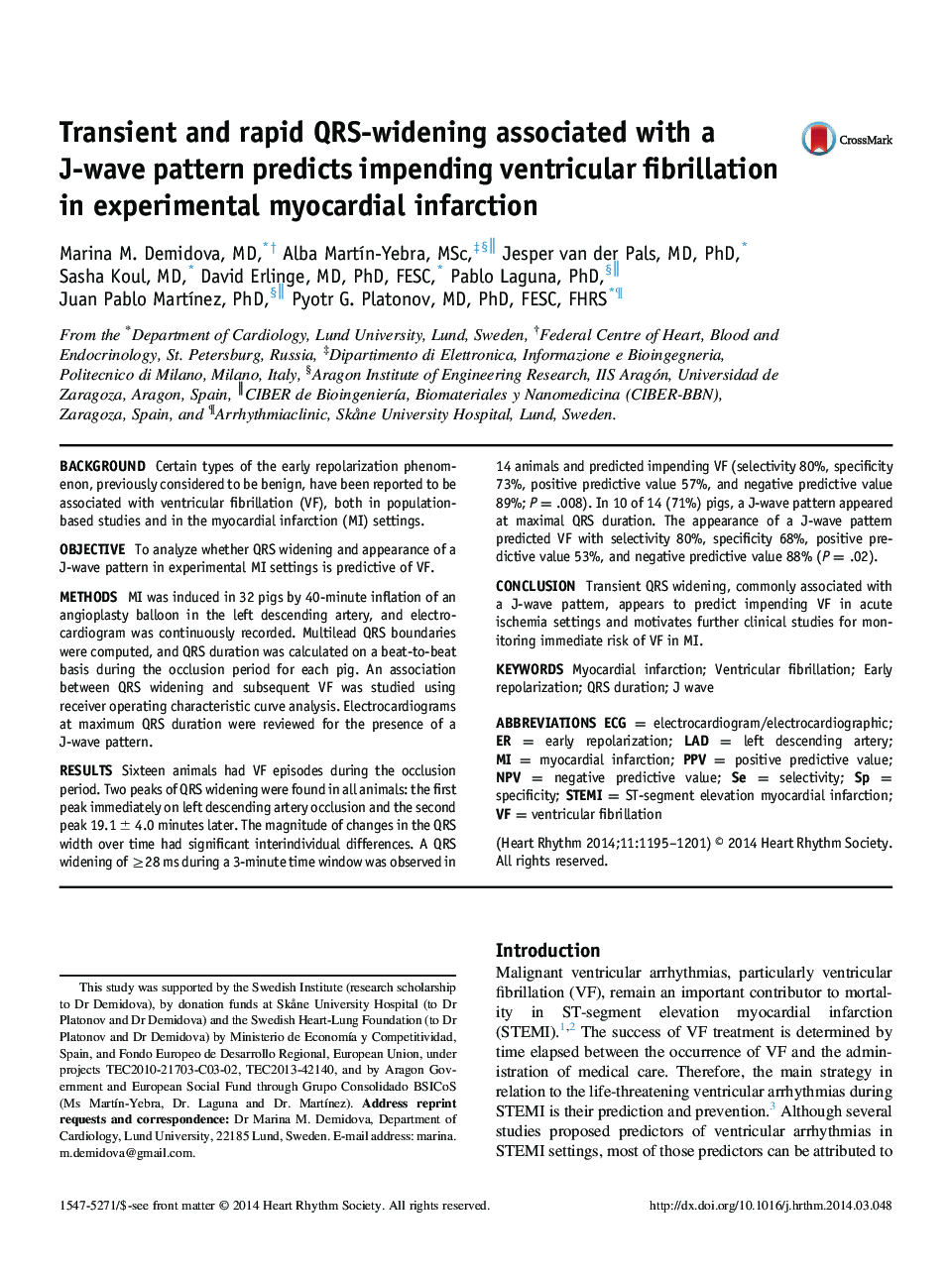| Article ID | Journal | Published Year | Pages | File Type |
|---|---|---|---|---|
| 2921999 | Heart Rhythm | 2014 | 7 Pages |
BackgroundCertain types of the early repolarization phenomenon, previously considered to be benign, have been reported to be associated with ventricular fibrillation (VF), both in population-based studies and in the myocardial infarction (MI) settings.ObjectiveTo analyze whether QRS widening and appearance of a J-wave pattern in experimental MI settings is predictive of VF.MethodsMI was induced in 32 pigs by 40-minute inflation of an angioplasty balloon in the left descending artery, and electrocardiogram was continuously recorded. Multilead QRS boundaries were computed, and QRS duration was calculated on a beat-to-beat basis during the occlusion period for each pig. An association between QRS widening and subsequent VF was studied using receiver operating characteristic curve analysis. Electrocardiograms at maximum QRS duration were reviewed for the presence of a J-wave pattern.ResultsSixteen animals had VF episodes during the occlusion period. Two peaks of QRS widening were found in all animals: the first peak immediately on left descending artery occlusion and the second peak 19.1 ± 4.0 minutes later. The magnitude of changes in the QRS width over time had significant interindividual differences. A QRS widening of ≥28 ms during a 3-minute time window was observed in 14 animals and predicted impending VF (selectivity 80%, specificity 73%, positive predictive value 57%, and negative predictive value 89%; P = .008). In 10 of 14 (71%) pigs, a J-wave pattern appeared at maximal QRS duration. The appearance of a J-wave pattern predicted VF with selectivity 80%, specificity 68%, positive predictive value 53%, and negative predictive value 88% (P = .02).ConclusionTransient QRS widening, commonly associated with a J-wave pattern, appears to predict impending VF in acute ischemia settings and motivates further clinical studies for monitoring immediate risk of VF in MI.
